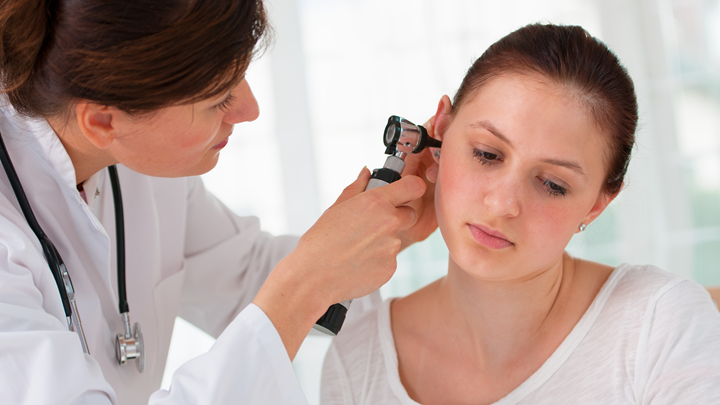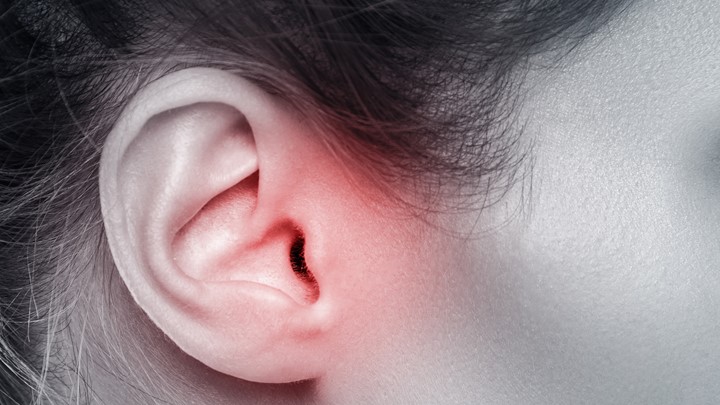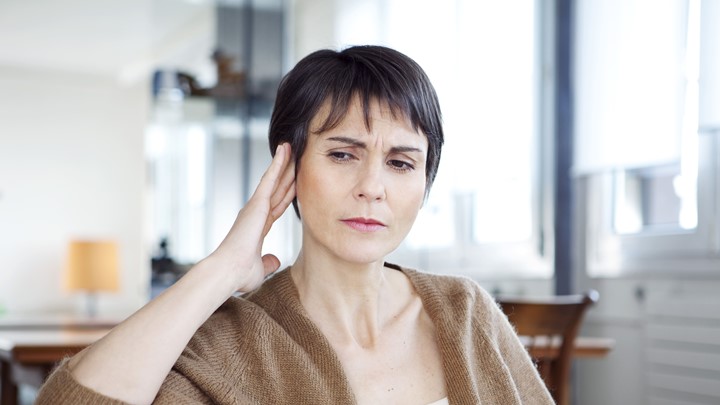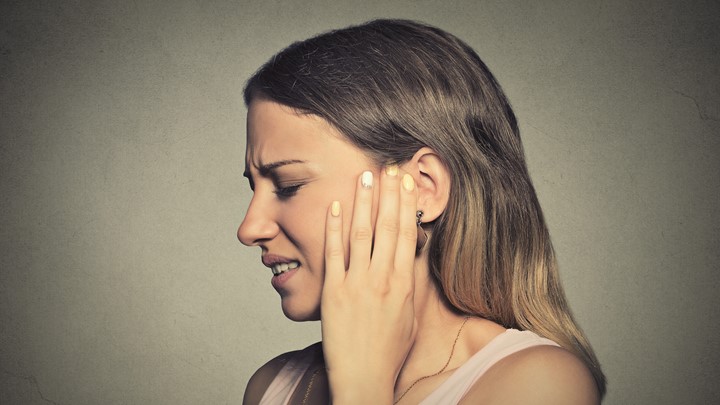Our topics
Ear diseases
The ear is a sensitive and complex sensory organ. It enables people to hear and is also connected to the organ of balance. Diseases of the ears can therefore have far-reaching consequences and be perceived as very impairing by those affected. Chronic ear diseases in particular are agonizing and often the cause of hearing loss. Stresses on the hearing and sense of balance are not always direct diseases, but often symptoms caused by other diseases. For example, widespread tinnitus is a symptom - not a disease. Injuries and stress can also cause symptoms that are perceived as ear diseases. In the case of diseases of the ears, the individual health issues and problems must be clarified by a physician.

Ear diseases at a glance
The most common ear diseases are inflammations, but there are a number of other direct diseases of the sensory organ. Here is an overview of the most important ear diseases:
Inflammations
Infections of the ear are classified according to the areas affected: into inner ear infections (otitis interna), middle ear infections (otitis media), and auditory canal infections (otitis externa). Acute and chronic middle ear infections occur most frequently. Causes of these diseases are mainly viruses and bacteria that enter the ear area from the outside or through the nasopharynx. In the case of bacterial inflammation, ENT specialists usually prescribe antibiotics. In severe cases, inflammation of the ear can lead to hearing loss or tinnitus.
-
Cholesteatoma
A cholesteatoma is a purulent inflammation of the middle ear that causes a benign ingrowth. Over time, it can cause damage to other areas of the ear and also cause earaches and headaches. Possible causes include a tympanic membrane defect and chronic otitis media, and cholesteatoma may also be congenital (birth defect). For complete healing, surgical procedures by specialists are required, in which the affected areas are removed and restored by plastic reconstruction. - Meniere's disease
This unilateral, probably hereditary ear disease of the inner ear occurs rarely. It leads to symptoms such as hearing loss, tinnitus and dizziness, which usually occur in attacks that can last only a few minutes, but sometimes longer. Affected persons are treated by the ENT specialist with medications both preventively and acutely, so that the symptoms can usually be considerably alleviated. - Otosclerosis
Due to bone hardening and new bone formation at the stapes, malleus and incus, the ossicles can no longer sufficiently transmit sound. The result is hearing loss and possibly tinnitus. The causes are not fully understood, but there are probably links to viral infections, faulty autoimmune processes and hereditary predispositions. Hearing loss usually affects the low frequencies more. Hearing can often be restored by surgery. - Usher syndrome
This very rare, hereditary disease causes degeneration of the retina and inner ear, i.e. slowly progressive damage to vision and hearing. In the inner ear, the fine hair cells are affected, which are vibrated by sound waves. As a result, acoustic signals are transmitted more poorly or not at all. The aim of specialist therapy is to slow down the progression of the disease by means of medication. At the same time, visual aids and hearing aids can compensate for the impairments.
Tinnitus and hearing loss - agonizing, but not real ear diseases
They are often mentioned in the same breath and perceived by many people as ear diseases: Hearing loss and tinnitus. Even though there are connections, they are each independent symptoms that are triggered by different influences or diseases and must be clarified by an ENT specialist in any case:
- Tinnitus
Tinnitus is an acute or chronic ear noise that is perceived as whistling or hissing. Although diseases such as an inflammation of the middle ear can be the cause, in most cases noise pollution or stress are the reason. If the cause can be clearly identified, the ENT physician advises eliminating or avoiding it. In the case of chronic tinnitus, it can also help sufferers to learn to perceive the symptoms as little as possible by means of relaxation exercises. - Hearing loss
Hearing loss is a sudden onset of unilateral hearing problems, including hearing loss. Symptoms include a dull feeling in the ear and ringing in the ears (acute tinnitus). Therefore, a hearing loss is often equated with tinnitus. The causes can be many, and include poor blood flow to the inner ear and, most importantly, stress. Although the symptoms of a hearing loss may disappear on their own, an ENT specialist should definitely be consulted as soon as possible. He can decide whether immediate treatment with cortisone or a drug that promotes blood flow is advisable.
Hearing loss
Hearing loss (hypacusis) is not an ear disease, but a secondary condition that must always be evaluated by an ENT physician. There are different forms, which are divided into three main types: Conductive Hearing Loss, Sensorineural Hearing Loss and Combined Conductive Hearing Loss:
- In conductive hearing loss, sound waves reach the inner ear in a diminished manner or not at all. The cause can be a malformation or a blockage in the ear canal. Conductive hearing loss in the middle ear is often the result of an infection. Affected persons perceive everyday sounds much more quietly and have the feeling of hearing through absorbent cotton.
- Sensorineural hearing loss mostly affects the inner ear. Although sound waves are transmitted to the inner ear by the eardrum and ossicles, they are not properly processed and transmitted there by the damaged hair cells. If prolonged exposure to noise is the cause of the damage, it is referred to as noise-induced hearing loss.
- Age-related hearing loss (presbycusis) is the most common form of sensorineural hearing loss. It develops primarily as an effect of the natural degeneration processes of our body in old age. This naturally also affects the auditory sensory cells in the inner ear, causing a gradual loss of hearing.,. Typical is a hearing loss, especially of high frequencies. The age-related hearing loss can be compensated well in many cases, e.g. by a professional supply of hearing aids.
- In combined conductive-sympathetic hearing loss, disorders of the middle and inner ear occur simultaneously.
Other damage and symptoms resulting from other diseases
Hearing problems can result not only from ear diseases, but also from other stresses or damage to areas of the ear:
- Injuries to the eardrum
External influences such as a blow to the head or a fall can cause a ruptured eardrum. A middle ear infection or a loud bang are also possible causes. Very often, however, injuries to the eardrum are caused by careless cleaning of the ear with cotton swabs. In less severe cases, the eardrum heals on its own. If the tear is larger, the ENT doctor performs splinting or reconstruction during surgery. This means the eardrum is repaired or replaced with the body's own tissue. - Tympanic effusion
The tympanic cavity is a cavity in the middle ear located behind the eardrum. A slight negative pressure often develops there, which can normally be compensated for by swallowing. As a result of colds, secretions can accumulate in the tympanic cavity that do not drain away. The resulting persistent feeling of pressure is unpleasant for those affected, and they often complain of hearing loss. The secretion may allow viruses and bacteria to enter the ear area, which in turn can cause a middle ear infection. Young children in particular suffer from a tympanic effusion. If the secretion does not drain away on its own within a few days, an ear, nose and throat (ENT) examination must be performed and treatment initiated. In more severe cases, minor surgery may be required - such as inserting a so-called tympanostomy tube or making an incision in the eardrum to allow the secretion to drain. - Positional vertigo
In positional vertigo, tiny otoliths (also called ear stones or statoliths) break loose in the ear and enter the arcuate ducts belonging to the organ of equilibrium, causing dizziness. Triggers are jerky movements of the body or head. During medical treatment, those affected learn movement exercises that allow the otoliths to move out of the semicircular canals again and thus no longer impair their sense of balance. - Barotrauma
Barotrauma results from changes in pressure in the middle ear, such as during diving or flying. Symptoms of barotrauma include severe ear pain and dizziness, as well as severe nausea. In sudden and severe pressure changes, ruptured eardrums are also possible, and in more severe cases, bleeding occurs in the middle ear. Cortisone is used for medical treatment, and surgery may be necessary. In the case of severe damage to the hearing, persistent hearing loss may also develop. In this case, a supply of hearing aids is advisable.



